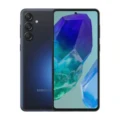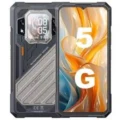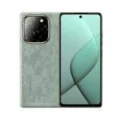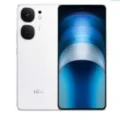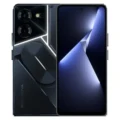Samsung Galaxy J2 Core





- : 1GB RAM Exynos 7570 Quad
- : 5.0" 540x960 pixels
- : 2600mAh
- : 8MP 1080p
Uncompromising Performance. Unwavering Value. Introducing the Samsung Galaxy J2 Core.
The Samsung Galaxy J2 Core is meticulously crafted to deliver a seamless smartphone experience, empowering you to navigate your everyday life with confidence.
- Vivid Display: Immerse yourself in a captivating 5.0″ qHD display, perfect for browsing, watching videos, and staying connected.
- Optimized Performance: Experience smooth operation with a powerful 1.4 GHz Quad-Core processor and 1GB of RAM, ensuring efficient multitasking.
- Capture Life’s Moments: Document your adventures with the reliable 8MP rear camera and capture stunning selfies with the 5MP front camera.
- Ample Storage: Store your essential apps, photos, and videos with 8GB of internal storage, expandable up to 256GB via microSD card (sold separately).
- Long-lasting Power: Stay connected throughout the day with a durable 2600mAh battery.
- Simplified Experience: Enjoy a streamlined user experience with Android Oreo (Go edition), optimized for faster performance and efficient use of storage space.
The Samsung Galaxy J2 Core – everything you need, nothing you don’t. Order yours today!
So, do you want to know more about this phone? Kindly visit the official SAMSUNG website.
Not Satisfied?
Still confused while choosing your Smartphone from Samsung? Go to the store, and choose another one of your choice.
Specs
Network
| 2G Network GSM 850 / 900 / 1800 / 1900 - SIM 1 & SIM 2 (dual-SIM) CDMA 800 / 1900 |
GSM 850 / 900 / 1800 / 1900 - SIM 1 & SIM 2 |
| 3G Network |
HSDPA 850 / 900 / 2100 - J260Y/DS, J260G/DS HSDPA 850 / 900 / 1700(AWS) / 1900 / 2100 - J260M/DS |
| 4G Network |
1, 3, 5, 7, 8, 28, 38, 40, 41 - J260Y/DS 1, 2, 3, 4, 5, 7, 8, 12, 17, 28 - J260M/DS 1, 3, 5, 7, 8, 20 - J260G/DS |
| Speed |
HSPA 42.2/5.76 Mbps, LTE Cat4 150/50 Mbps |
LAUNCH
| Announced | August, 2025 |
| Status |
Available. Released 2018, August |
BODY
| Dimensions | 143.4 x 72.1 x 8.9 mm (5.65 x 2.84 x 0.35 in) |
| Weight | 154 g (5.43 oz) |
| Build | Glass front (Gorilla Glass), plastic back, plastic frame |
| SIMs SIM (Subscriber Identity Module) is a small card that contains mobile network subscriber's account information. This allows the phone using the card to attach to a mobile network. The SIM card is most commonly associated with GSM and UMTS mobile networks. Moving a SIM card from one phone to another allows a subscriber to switch mobile phones without having to contact their mobile network carrier. SIM cards can also be used by a phone to store limited amounts of data, such as phone numbers and text messages. |
Dual SIM (Micro-SIM, dual stand-by) |
Display
| Display Type Display Technology => A number of display technologies and types used in mobile phones => TFT (Thin Film Transistor), IPS (In-Place Switching), OLED (Organic Light Emitting Diode), AMOLED (Active-Matrix Organic Light-Emitting Diode), Super AMOLED (an even advanced version of AMOLED), Resistive Touchscreen (Resistive touchscreens contain two layer of conductive material with a very small gap between them which acts as a resistance), Capacitive Touchsceen (Capacitive touchscreen technology consists of a layer of glass coated with a transparent conductor) | PLS LCD |
| Size | 5.0 inches, 68.9 cm2 (~66.7% screen-to-body ratio) |
| Resolution | 540 x 960 pixels, 16:9 ratio (~220 ppi density) |
| Protection Display Protection => Gorilla Glass is a special alkali-aluminosilicate glass shield with exceptional damage resistance that helps protect mobile displays from scratches, drops, and bumps of everyday use, It is always better to go for a smartphone with Gorilla Glass for that added protection and peace of mind. | Corning Gorilla Glass (unspecified version) |
PLATFORM
| Operating System OS => Every computer system run on a base software called Operating System (OS). Operating System controls all basic operations of the computer (such as smartphone, PDAs, tablet computers and other handheld devices). The Operating System allows the user to install and run third party applications (apps), apps are used to add new functionality to the device. | Android 8.1 Oreo (Go edition) |
| Chipset Chipset is a group of integrated circuits designed to perform one or a more dedicated functions, often with real time computing constraints, Popular smartphones are equipped with more advanced embedded chipsets that can do many different tasks depending on their programming. | Exynos 7570 Quad (14 nm) |
| CPU CPU (Central Processing Unit) mostly known as processors, CPU processes instructions in order to carry out certain functions that make your device operate properly. Processors are often described as the brain of computers, smartphones and tablets, Smartphones and tablets rely on processors to carry out their every task, Processors are an incredibly important factor in selecting any type of computing device, including your smartphone. | Quad-core 1.4 GHz Cortex-A53 |
| GPU GPU (Graphics Processing Unit) is a single-chip processor designed to rapidly manipulate and alter memory to accelerate the creation of images in a frame buffer intended for output to a display, This includes things such as lighting effects, object transformations, and 3D motion. | Mali-T720 |
MEMORY
| Card Slot Memory Card Slot is a special slot for inserting a memory card. Memory cards allow you to expand the phone's built-in memory, A memory card (sometimes called a flash memory card or a storage card) is a small storage medium used to store data such as text, pictures, audio, and video, for use on small, portable or remote computing devices such as mobile phones, mp3 players, digital cameras. | microSDXC (dedicated slot) |
| Internal | 8GB 1GB RAM, 16GB 1GB RAM eMMC 5.0 |
MAIN CAMERA
| Cameras Specs Today’s smartphones come equipped with a very comprehensive set of camera related specifications. Our smartphone, for many of us, has become our primary camera due to it being the one we always have with us. |
8 MP, f/2.2, AF |
| Video | 1080p@30fps |
| Camera Features |
LED flash, HDR, panorama |
SELFIE CAMERA
| Cameras Specs Today’s smartphones come equipped with a very comprehensive set of camera related specifications. Our smartphone, for many of us, has become our primary camera due to it being the one we always have with us. |
5 MP, f/2.2 |
SOUND
| Loudspeaker | Yes |
| 3.5mm jack | Yes |
COMMS
| WLAN |
Wi-Fi 802.11 b/g/n, Wi-Fi Direct |
| Positioning |
GPS, GLONASS, BDS |
| Bluetooth Bluetooth is a wireless communications technology for exchanging data between mobile phones, headsets, computers and other network devices over short distances without wires, Bluetooth technology was primarily designed to support simple wireless networking of personal consumer devices. | 4.2, A2DP |
| Infrared Infrared connectivity is an old wireless technology used to connect two electronic devices. It uses a beam of infrared light to transmit information and so requires direct line of sight and operates only at close range. | |
| USB | microUSB 2.0, OTG |
| NFC NFC (Near field communication) is a set of standards for smartphones and similar devices to establish peer-to-peer radio communications with each other by touching them together or bringing them into proximity, usually no more than a few inches. | |
| Radio |
Features
| Sensors Sensors are electronic components that detects and responds to some type of input from the physical environment. The specific input could be light, heat, motion, moisture, pressure and location, The output is generally a signal that is converted to use in computing systems, a location sensor, such as a GPS receiver is able to detect current location of your electronic device. |
Accelerometer, proximity |
BATTERY
| Battery Type Battery Type => Cell phones run on various kinds of batteries depending on the manufacturer, phone size or shape and features. There are basically four types of cell phone batteries => Lithium Polymer, Lithium Ion, Nickel Metal Hydride and Nickel Cadmium. | Li-Ion (Lithium Ion) |
| Capacity Battery Capacity is a measure (typically in Amp-hr) of the charge stored by the battery, and is determined by the mass of active material contained in the battery. The battery capacity represents the maximum amount of energy that can be extracted from the battery under certain conditions. | 2600 mAh |
| Placement | removable |
MISC
| Colors |
Black, Gold, Lavender |
| Model | SM-J260M, SM-J260Y, SM-J260G, SM-J260F, SM-J260T1, SM-J260A, SM-J260AZ, SM-S260DL |
| SAR SAR (Specific absorption rate): Each GSM handset has a radio transmitter and receiver in order to operate in the wireless GSM network. That transceiver is manufactured so that when used next to the ear and when worn on the belt, it won't exceed the limits for exposure to radio frequency energy set by the authorities.The authorities in question here are the Federal Communications Commission (FCC) of the U.S. Government, Industry Canada of the Canadian Government (IC), and the Council of the European Union. |
0.61 W/kg (head) 0.61 W/kg (body) |
| SAR EU Each GSM handset has a radio transmitter and receiver in order to operate in the wireless GSM network. That transceiver is manufactured so that when used next to the ear and when worn on the belt, it won't exceed the limits for exposure to radio frequency energy set by the authorities.The authorities in question here are the Federal Communications Commission (FCC) of the U.S. Government, Industry Canada of the Canadian Government (IC), and the Council of the European Union. |
1.39 W/kg (body) |
| Price |
About 120 EUR |
TESTS
Reviews
Disclaimer Note
We strive to maintain accurate and up-to-date content on our website for general information purposes only. Please refrain from using the material for business, legal, or any other decisions.



